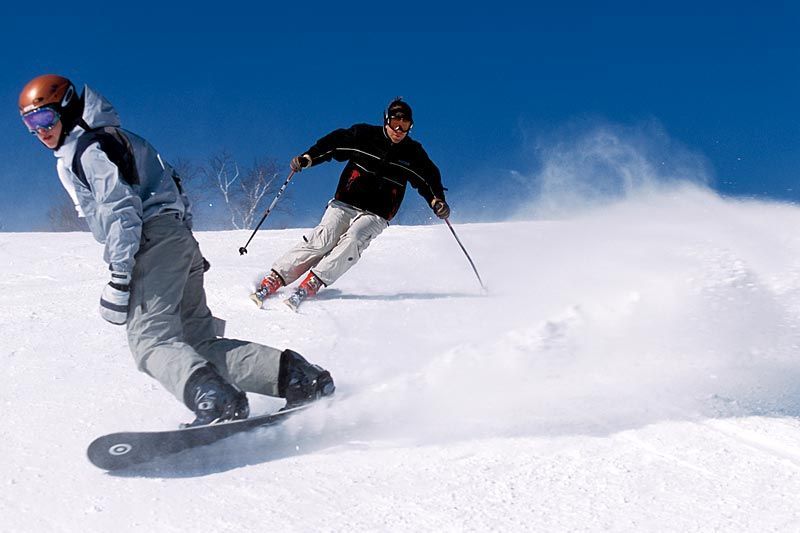Winter has well and truly set in and the first of the snow for this season has started to fall. Are you ready to hit the slopes?
Skiing and snow boarding are unique forms of exercise that require strength, balance, coordination and control. You may have been keeping fit over summer by swimming or running but what is your agility and balance like at the moment?
Are you all to familiar with the muscle soreness that plagues most skiers after their first full day on the slopes? Sore knees, low back pain and burning muscles that haven’t been worked for a while?
This need not be the case if you prepare your body correctly, and the risk of serious injury on the slopes can definitely be reduced with adequate preparation.
Skiing and snow boarding require good balance. We require fine motor control and coordination to be able to control shifts in our centre of gravity and to adapt to rapid changes in terrain and speed of movement. Snow sports require strength and endurance, particularly in our leg and trunk muscles, to protect the joints from the large forces they encounter with holding sustained positions for long periods, and changing forces with turns and adaptations to the terrain. Core stability is essential to stabilize the trunk and pelvis, which in turn provides a stable platforms for the legs and shoulder muscles to work from. Lastly cardiovascular fitness is essential to any skier or snow boarder.
An exercise program that focuses on these elements will prepare your body for the tasks ahead and decrease the risk of muscle soreness, strains and falls.
Try the following 7 exercises 3-4 times a week in the lead-up to your snow holiday:
- Squats: An important exercise to strengthen quadriceps and glutes. Watch the position of your knees when squatting to ensure you’re not overloading your knee joints. Always keep you back straight. Start with 3 sets of 10 slow squats and progress by adding resistance or increasing the number of repetitions. Snow boarders spend a lot of time in a mini squat position, so getting your body used to using these muscles will help prevent muscle soreness!
- Lunges: Again, focusing on quadriceps and glutes but lunges require a bit more balance too. Cross-country skiers will find themselves using the lunging movement repetitively. Good technique requires that your front knee does not travel past your toes and your back stays straight throughout the movement. Start with 3 sets of 10 and again progress by either adding resistance or increasing the number of repetitions
- Single leg squat: Strength and balance. As for exercise one, but only standing on one leg. Keep your knee bend smaller and watch that your knee is pointed over your outer toes. 3 sets of 10
- Single leg hopping: Balance and coordination. Keeping your knee slightly bent, hop 20 times on each leg. To increase complexity and dynamic balance, try throwing a ball against a wall as you hop or change direction as you’re hopping as required when turning on your skies.
- Crab walking: Start with a small bend in your knees and take 10steps out to the side. Side step back to the start. To increase resistance, tie a theraband around your ankles. You should feel a nice burn through your glutes by the end of your set. You can always increase the number of steps to make it harder
- Box jumps: A good strengthening exercise which also works on power. Box jumps are a more advanced exercise though, so begin with your squats, lunges and hopping and progress to box jumps once you are comfortable. Choose a small step to begin with. Bend your knees and jump to propel yourself up on to the step landing with bent knees. Increase complexity by increasing the height of the step.
- Plank: Use your core abdominal muscles to hold your body in a plank position. The beginner version can start with your knees and elbows on the ground, contract your lower abdominal muscles to hold a straight bank position for 10 seconds. Increase the length of your holds and once you can comfortably hold for 30seconds, try progressing to elbows and toes.
If any of these exercises cause pain, stop and consult your physiotherapist. Ideally perform these exercises at least 3-4 times a week. You should keep up with your normal cardiovasular exercise, whether it be walking, running, cycling or swimming. Its also important that you stretch after exercise so check out our free stretching guides online. Many Pilates exercises will also focus on these important elements of fitness and can help get you snowboarding/ski ready!
-Sheree

